Microeconomics Assignment: Production, Costs, and Profit Analysis
VerifiedAdded on 2022/07/28
|9
|936
|30
Homework Assignment
AI Summary
This microeconomics assignment solution addresses several key concepts. It begins by analyzing a production function exhibiting diminishing marginal productivity of labor and its associated total cost curve, explaining their shapes based on the law of diminishing marginal returns. The solution then calculates Sandra's accounting and economic profit for her guitar business, considering explicit and implicit costs, including opportunity costs from alternative employment and rental income. Furthermore, the assignment clarifies the relationship between short-run and long-run average total costs. It determines the cost curves that would shift due to a license fee, emphasizing that average total cost and average fixed cost curves would be affected. Finally, the solution examines a fisherman's production function, highlighting its inverted J-shape and the associated total cost curve, which is upward sloping with increasing slope.
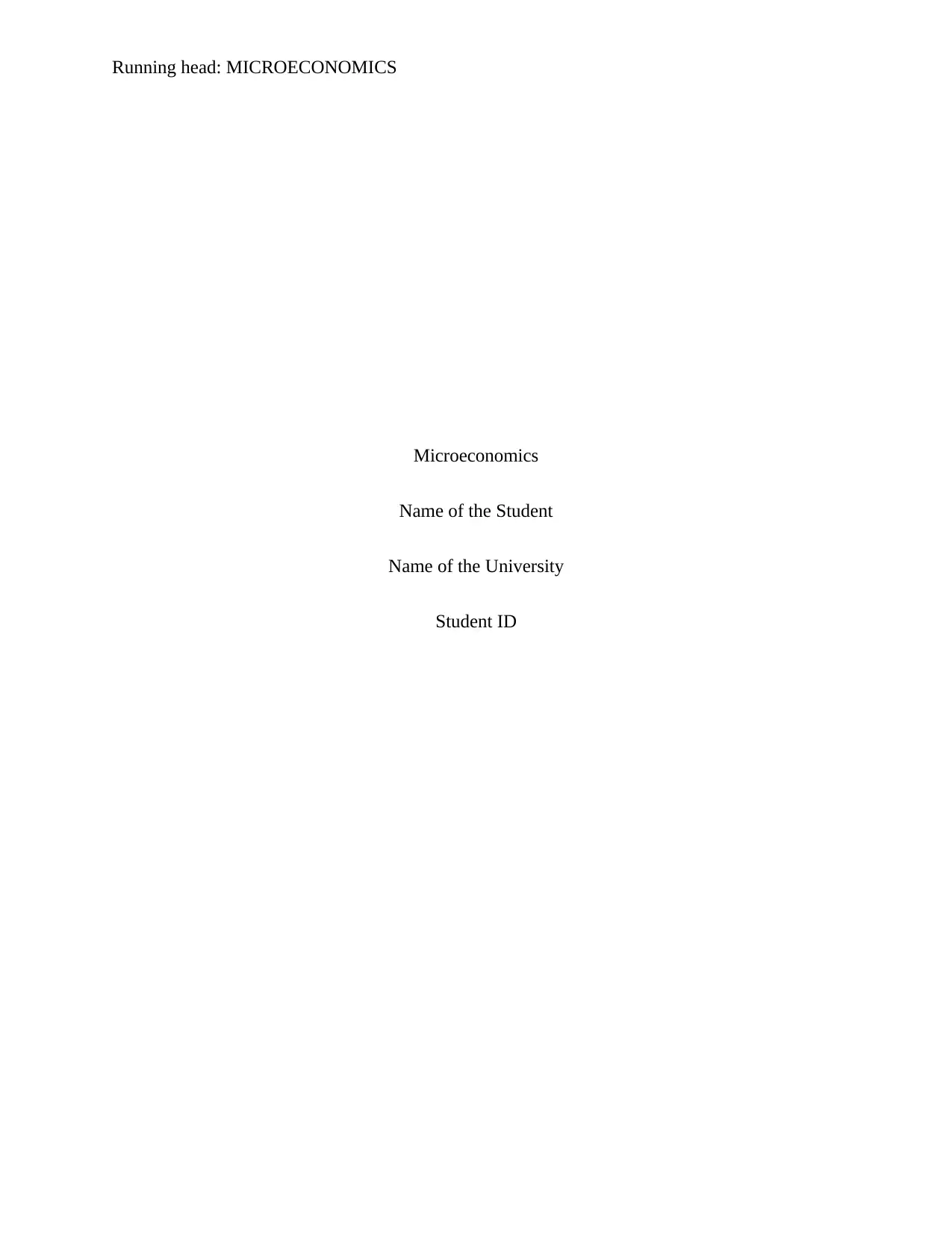
Running head: MICROECONOMICS
Microeconomics
Name of the Student
Name of the University
Student ID
Microeconomics
Name of the Student
Name of the University
Student ID
Paraphrase This Document
Need a fresh take? Get an instant paraphrase of this document with our AI Paraphraser
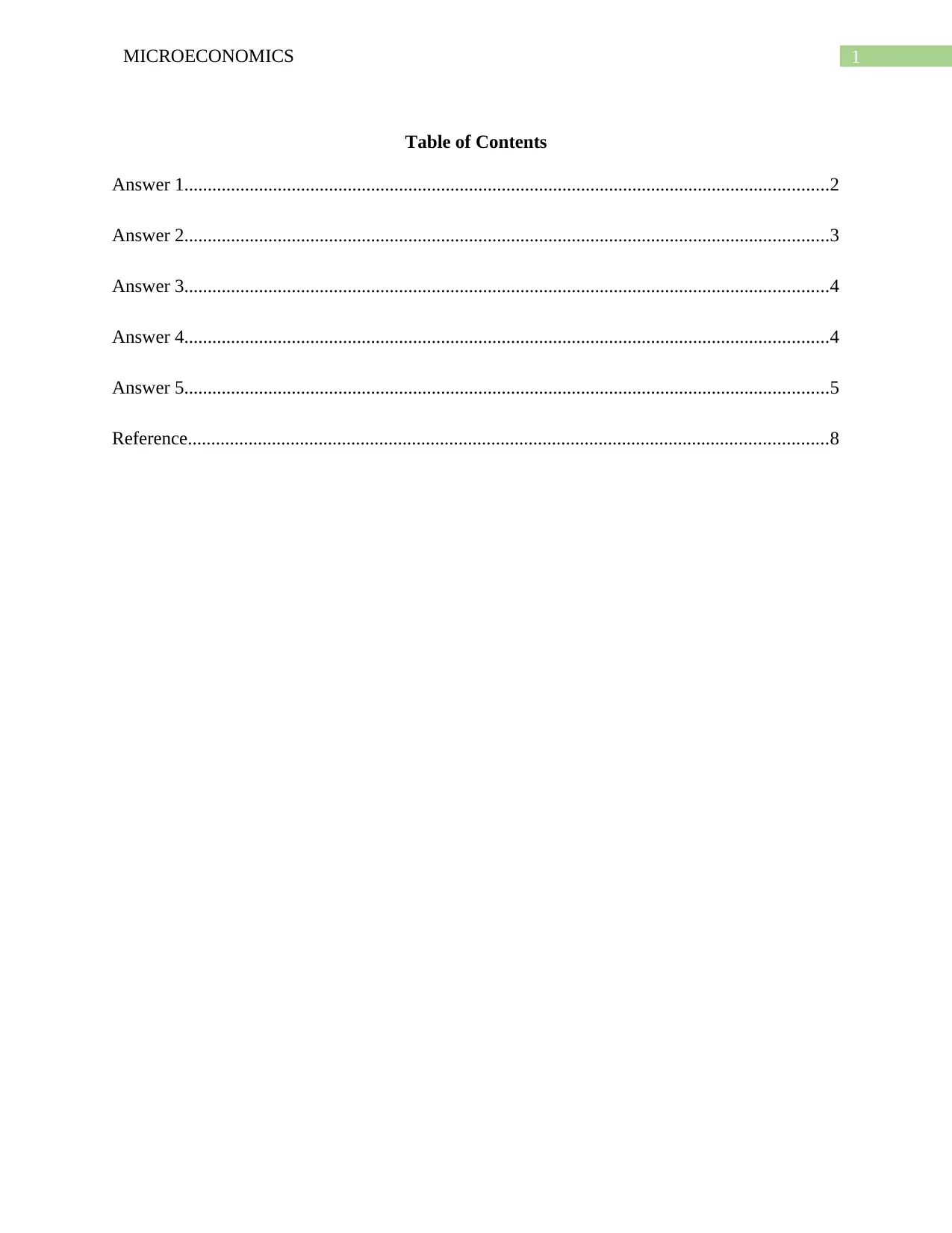
1MICROECONOMICS
Table of Contents
Answer 1..........................................................................................................................................2
Answer 2..........................................................................................................................................3
Answer 3..........................................................................................................................................4
Answer 4..........................................................................................................................................4
Answer 5..........................................................................................................................................5
Reference.........................................................................................................................................8
Table of Contents
Answer 1..........................................................................................................................................2
Answer 2..........................................................................................................................................3
Answer 3..........................................................................................................................................4
Answer 4..........................................................................................................................................4
Answer 5..........................................................................................................................................5
Reference.........................................................................................................................................8
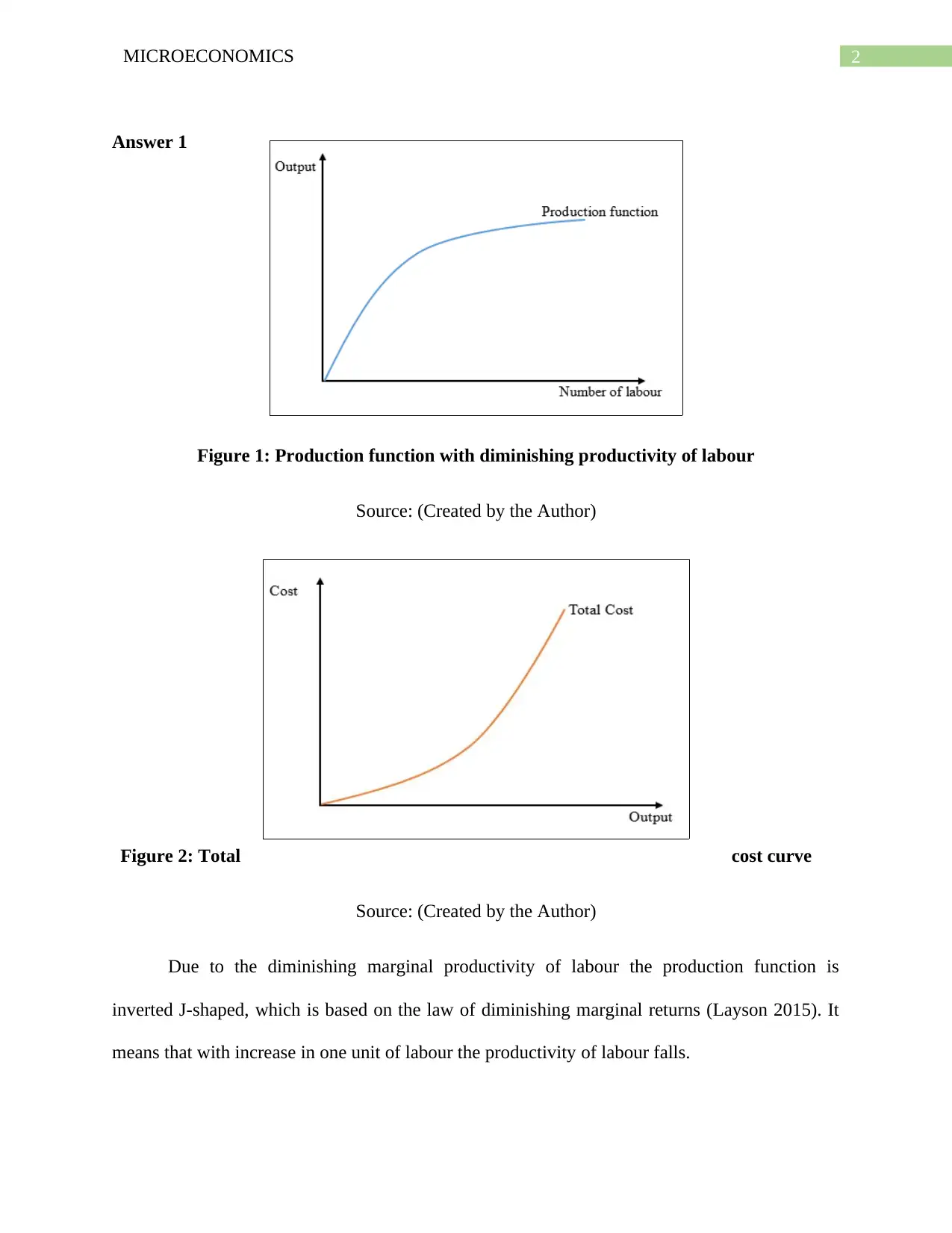
2MICROECONOMICS
Answer 1
Figure 1: Production function with diminishing productivity of labour
Source: (Created by the Author)
Figure 2: Total cost curve
Source: (Created by the Author)
Due to the diminishing marginal productivity of labour the production function is
inverted J-shaped, which is based on the law of diminishing marginal returns (Layson 2015). It
means that with increase in one unit of labour the productivity of labour falls.
Answer 1
Figure 1: Production function with diminishing productivity of labour
Source: (Created by the Author)
Figure 2: Total cost curve
Source: (Created by the Author)
Due to the diminishing marginal productivity of labour the production function is
inverted J-shaped, which is based on the law of diminishing marginal returns (Layson 2015). It
means that with increase in one unit of labour the productivity of labour falls.
⊘ This is a preview!⊘
Do you want full access?
Subscribe today to unlock all pages.

Trusted by 1+ million students worldwide

3MICROECONOMICS
Moreover, the shape of total cost curve is upward sloping with increasing slope because
with rise in one unit of output the cost increases. This happens because of diminishing marginal
returns.
Answer 2
Sandra pays $1, 400, 000 wholesale cost to the guitar manufacturer. In addition to that,
she also pays a total of $1, 100, 000 as utility bills and wages. She makes these direct payments
every year for running the guitar business. Therefore, the above mentioned two cost incurred by
Sandra are explicit costs of her guitar business. On the other hand, if she did not choose to
operate the guitar business the she could have worked in an accounting firm and earn salary of $
70, 000 annually. Additionally, she could rent out the showroom and could have earned $50, 000
annually as rent. The salary and rent Sandra could have earned of she was not doing the guitar
business are the opportunity cost she incurred for doing business (Chodorow-Reich and
Karabarbounis 2016). Therefore, these opportunity cost are implicit cost of the guitar business.
Total revenue earned by Sandra per year from guitar business is $2, 600, 000.
Total explicit cost of the guitar business is
Explicit cost=1400000+1100000
¿ , Explicit cost =$ 2500000
Total implicit cost of the business is
Implicit cost=70000+50000
¿ , Implicit cost =$ 120000
Now, accounting profit of Sandra’ guitar business is
Moreover, the shape of total cost curve is upward sloping with increasing slope because
with rise in one unit of output the cost increases. This happens because of diminishing marginal
returns.
Answer 2
Sandra pays $1, 400, 000 wholesale cost to the guitar manufacturer. In addition to that,
she also pays a total of $1, 100, 000 as utility bills and wages. She makes these direct payments
every year for running the guitar business. Therefore, the above mentioned two cost incurred by
Sandra are explicit costs of her guitar business. On the other hand, if she did not choose to
operate the guitar business the she could have worked in an accounting firm and earn salary of $
70, 000 annually. Additionally, she could rent out the showroom and could have earned $50, 000
annually as rent. The salary and rent Sandra could have earned of she was not doing the guitar
business are the opportunity cost she incurred for doing business (Chodorow-Reich and
Karabarbounis 2016). Therefore, these opportunity cost are implicit cost of the guitar business.
Total revenue earned by Sandra per year from guitar business is $2, 600, 000.
Total explicit cost of the guitar business is
Explicit cost=1400000+1100000
¿ , Explicit cost =$ 2500000
Total implicit cost of the business is
Implicit cost=70000+50000
¿ , Implicit cost =$ 120000
Now, accounting profit of Sandra’ guitar business is
Paraphrase This Document
Need a fresh take? Get an instant paraphrase of this document with our AI Paraphraser
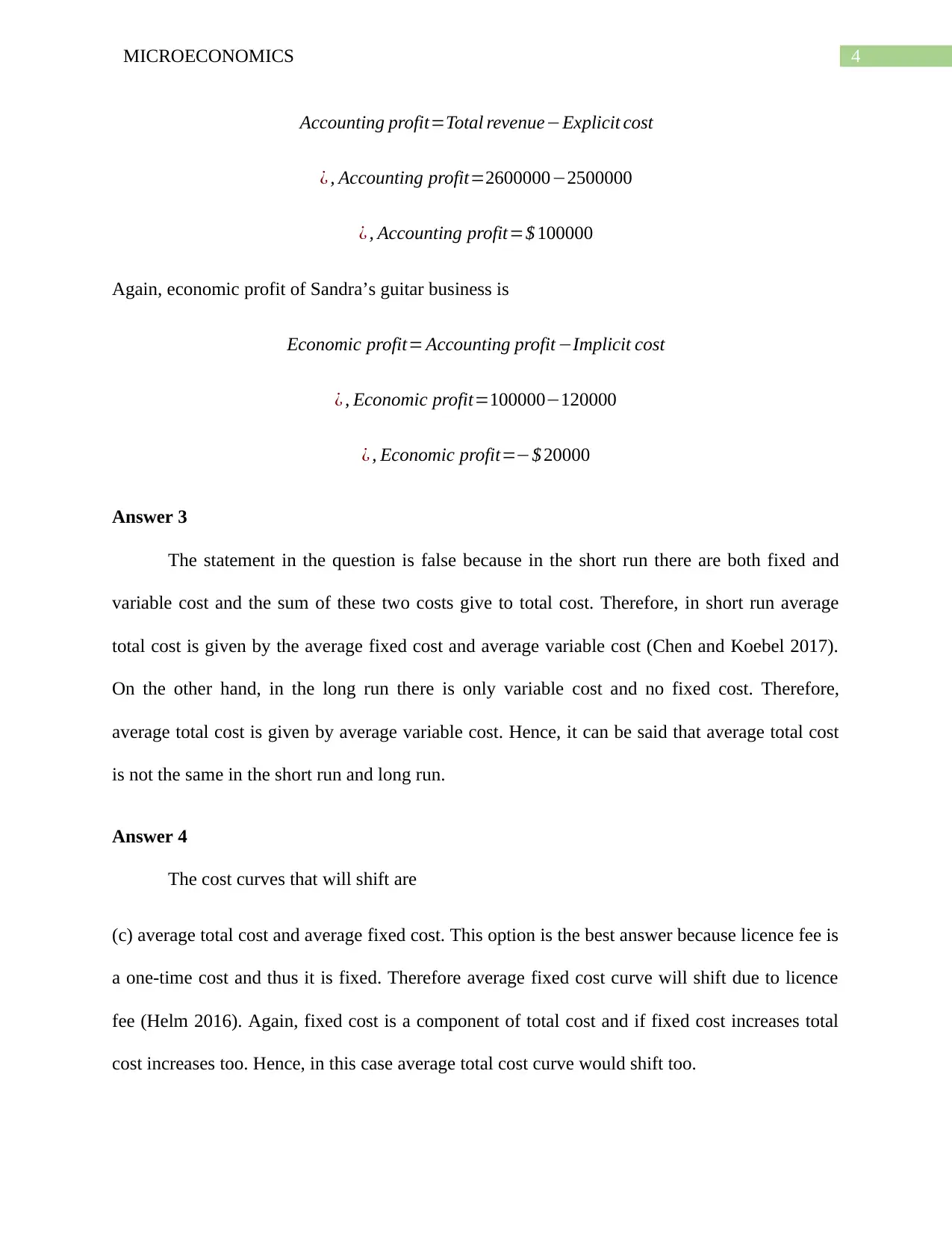
4MICROECONOMICS
Accounting profit=Total revenue−Explicit cost
¿ , Accounting profit=2600000−2500000
¿ , Accounting profit=$ 100000
Again, economic profit of Sandra’s guitar business is
Economic profit= Accounting profit −Implicit cost
¿ , Economic profit=100000−120000
¿ , Economic profit=−$ 20000
Answer 3
The statement in the question is false because in the short run there are both fixed and
variable cost and the sum of these two costs give to total cost. Therefore, in short run average
total cost is given by the average fixed cost and average variable cost (Chen and Koebel 2017).
On the other hand, in the long run there is only variable cost and no fixed cost. Therefore,
average total cost is given by average variable cost. Hence, it can be said that average total cost
is not the same in the short run and long run.
Answer 4
The cost curves that will shift are
(c) average total cost and average fixed cost. This option is the best answer because licence fee is
a one-time cost and thus it is fixed. Therefore average fixed cost curve will shift due to licence
fee (Helm 2016). Again, fixed cost is a component of total cost and if fixed cost increases total
cost increases too. Hence, in this case average total cost curve would shift too.
Accounting profit=Total revenue−Explicit cost
¿ , Accounting profit=2600000−2500000
¿ , Accounting profit=$ 100000
Again, economic profit of Sandra’s guitar business is
Economic profit= Accounting profit −Implicit cost
¿ , Economic profit=100000−120000
¿ , Economic profit=−$ 20000
Answer 3
The statement in the question is false because in the short run there are both fixed and
variable cost and the sum of these two costs give to total cost. Therefore, in short run average
total cost is given by the average fixed cost and average variable cost (Chen and Koebel 2017).
On the other hand, in the long run there is only variable cost and no fixed cost. Therefore,
average total cost is given by average variable cost. Hence, it can be said that average total cost
is not the same in the short run and long run.
Answer 4
The cost curves that will shift are
(c) average total cost and average fixed cost. This option is the best answer because licence fee is
a one-time cost and thus it is fixed. Therefore average fixed cost curve will shift due to licence
fee (Helm 2016). Again, fixed cost is a component of total cost and if fixed cost increases total
cost increases too. Hence, in this case average total cost curve would shift too.
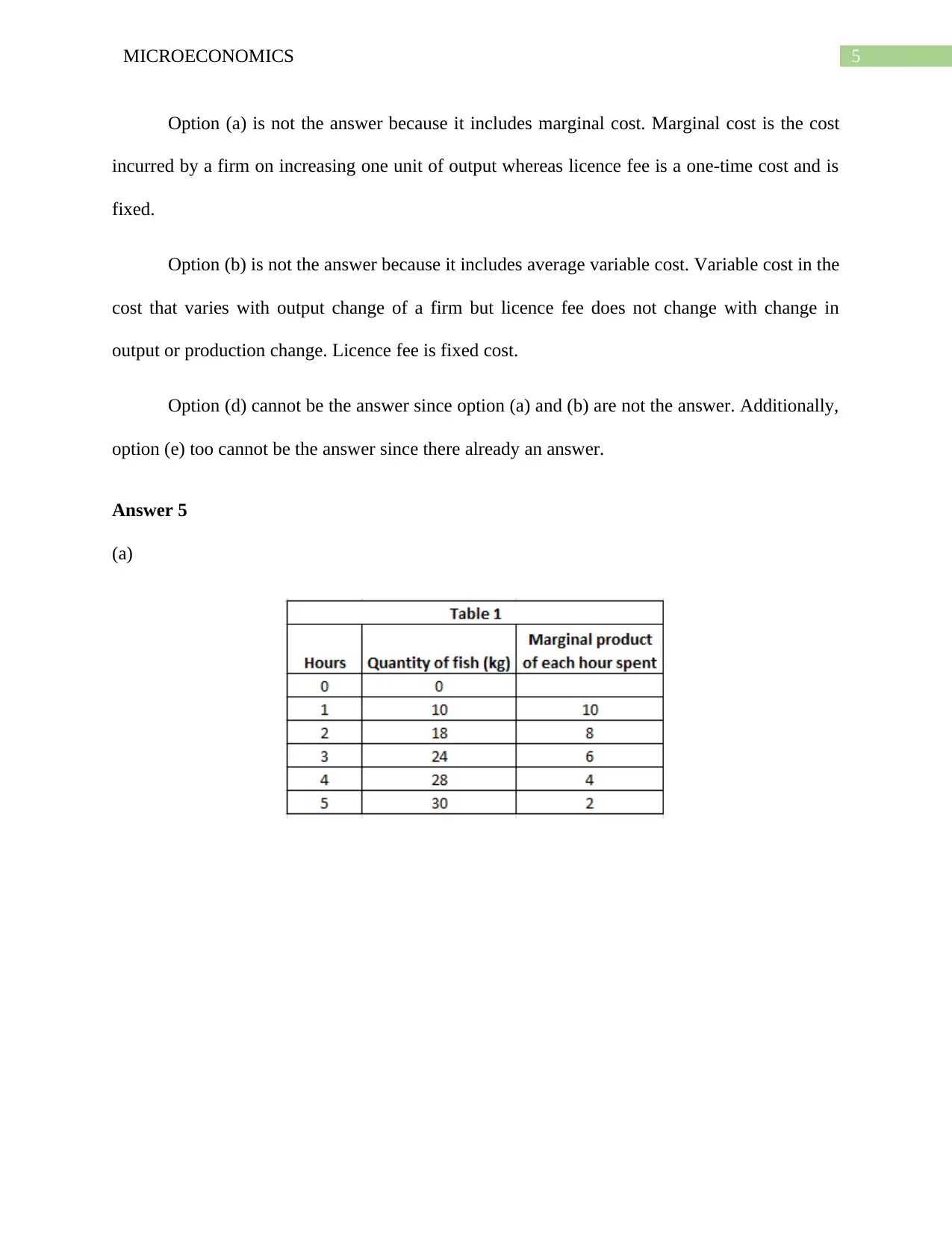
5MICROECONOMICS
Option (a) is not the answer because it includes marginal cost. Marginal cost is the cost
incurred by a firm on increasing one unit of output whereas licence fee is a one-time cost and is
fixed.
Option (b) is not the answer because it includes average variable cost. Variable cost in the
cost that varies with output change of a firm but licence fee does not change with change in
output or production change. Licence fee is fixed cost.
Option (d) cannot be the answer since option (a) and (b) are not the answer. Additionally,
option (e) too cannot be the answer since there already an answer.
Answer 5
(a)
Option (a) is not the answer because it includes marginal cost. Marginal cost is the cost
incurred by a firm on increasing one unit of output whereas licence fee is a one-time cost and is
fixed.
Option (b) is not the answer because it includes average variable cost. Variable cost in the
cost that varies with output change of a firm but licence fee does not change with change in
output or production change. Licence fee is fixed cost.
Option (d) cannot be the answer since option (a) and (b) are not the answer. Additionally,
option (e) too cannot be the answer since there already an answer.
Answer 5
(a)
⊘ This is a preview!⊘
Do you want full access?
Subscribe today to unlock all pages.

Trusted by 1+ million students worldwide
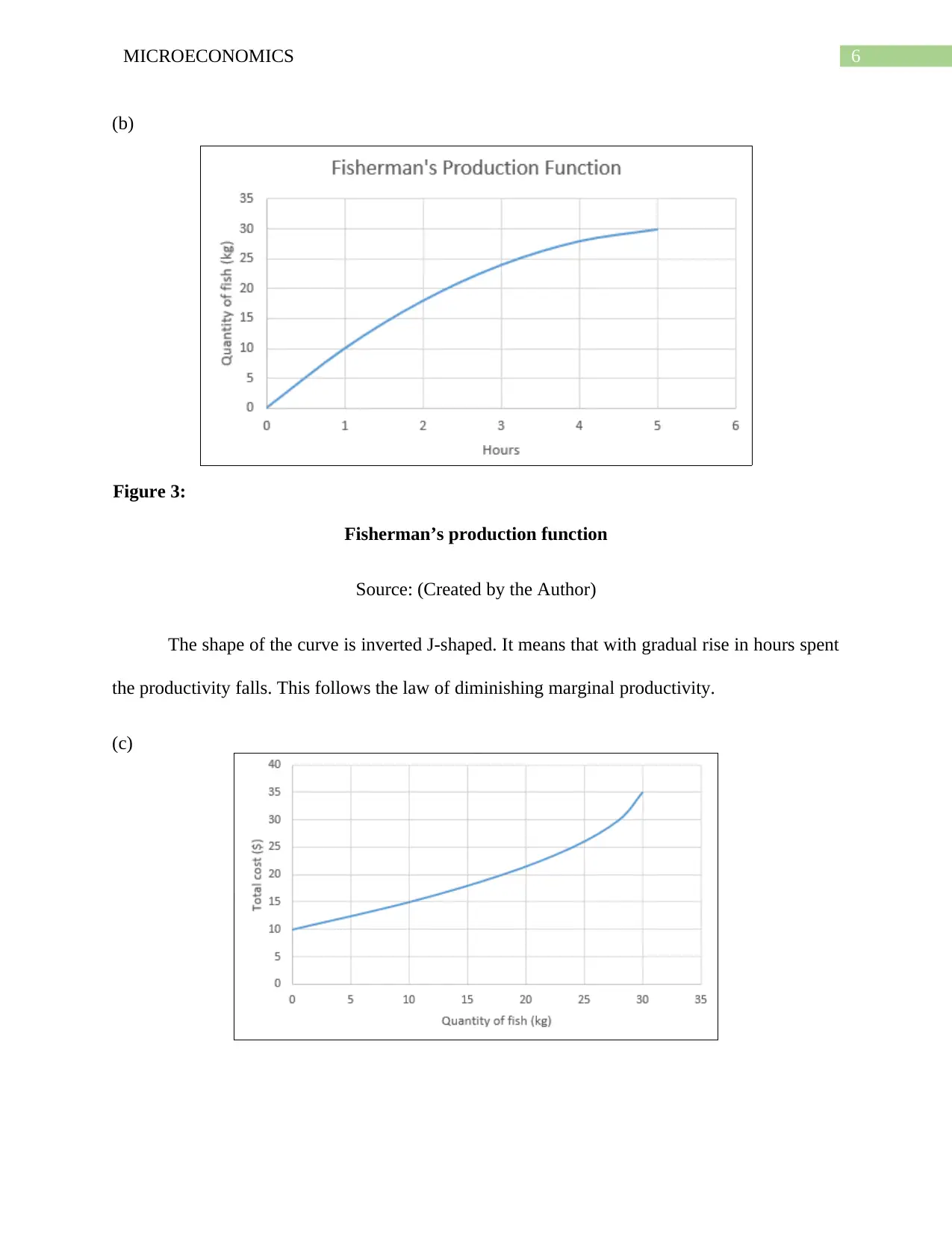
6MICROECONOMICS
(b)
Figure 3:
Fisherman’s production function
Source: (Created by the Author)
The shape of the curve is inverted J-shaped. It means that with gradual rise in hours spent
the productivity falls. This follows the law of diminishing marginal productivity.
(c)
(b)
Figure 3:
Fisherman’s production function
Source: (Created by the Author)
The shape of the curve is inverted J-shaped. It means that with gradual rise in hours spent
the productivity falls. This follows the law of diminishing marginal productivity.
(c)
Paraphrase This Document
Need a fresh take? Get an instant paraphrase of this document with our AI Paraphraser
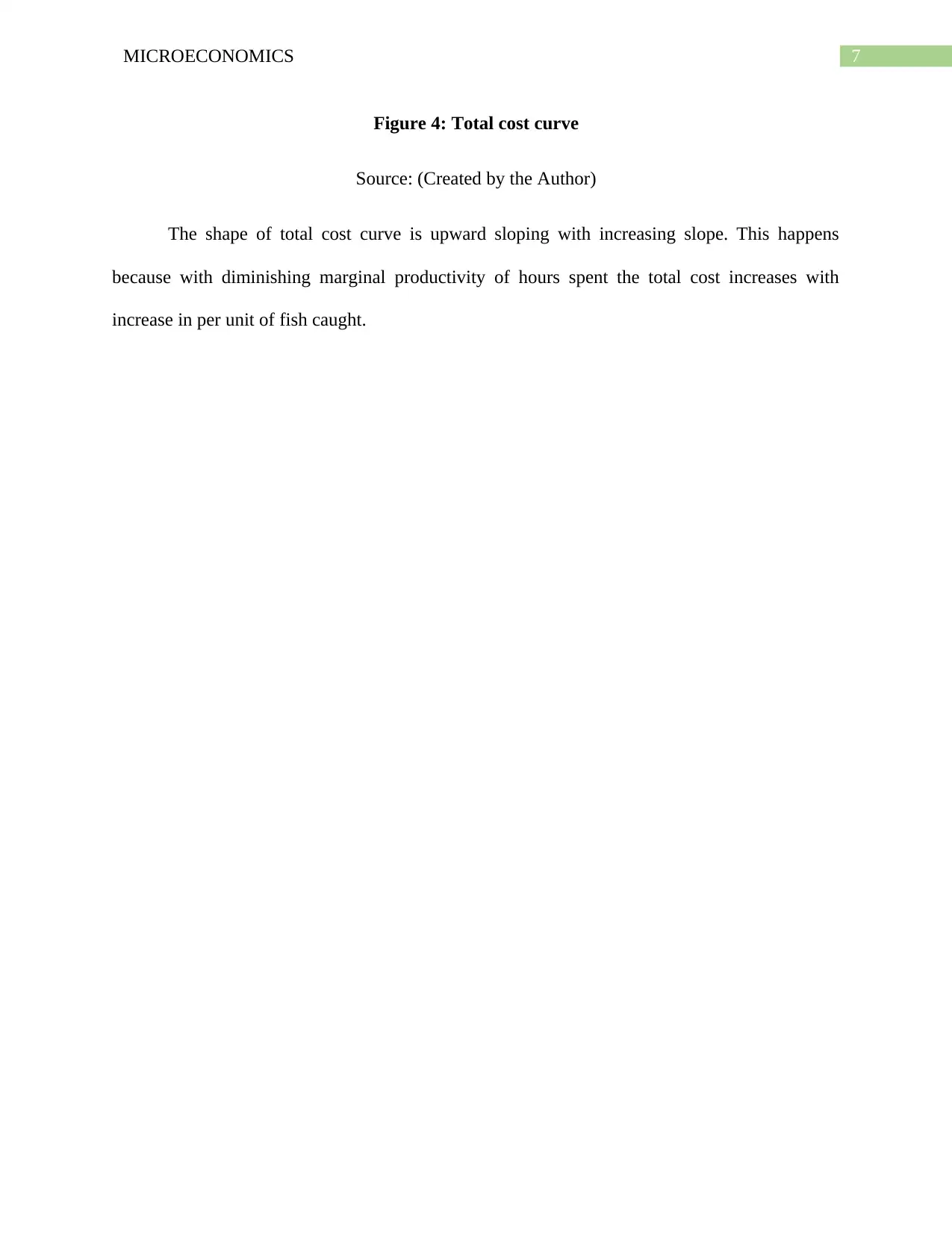
7MICROECONOMICS
Figure 4: Total cost curve
Source: (Created by the Author)
The shape of total cost curve is upward sloping with increasing slope. This happens
because with diminishing marginal productivity of hours spent the total cost increases with
increase in per unit of fish caught.
Figure 4: Total cost curve
Source: (Created by the Author)
The shape of total cost curve is upward sloping with increasing slope. This happens
because with diminishing marginal productivity of hours spent the total cost increases with
increase in per unit of fish caught.

8MICROECONOMICS
Reference
Chen, X. and Koebel, B.M., 2017. Fixed cost, variable cost, markups and returns to scale. Annals
of Economics and Statistics/Annales d'Économie et de Statistique, (127), pp.61-94.
Chodorow-Reich, G. and Karabarbounis, L., 2016. The cyclicality of the opportunity cost of
employment. Journal of Political Economy, 124(6), pp.1563-1618.
Helm, D., 2016. Price setting in regulated utilities and the potential application to the BBC.
Layson, S.K., 2015. The increasing returns to scale CES production function and the law of
diminishing marginal returns. Southern Economic Journal, 82(2), pp.408-415.
Reference
Chen, X. and Koebel, B.M., 2017. Fixed cost, variable cost, markups and returns to scale. Annals
of Economics and Statistics/Annales d'Économie et de Statistique, (127), pp.61-94.
Chodorow-Reich, G. and Karabarbounis, L., 2016. The cyclicality of the opportunity cost of
employment. Journal of Political Economy, 124(6), pp.1563-1618.
Helm, D., 2016. Price setting in regulated utilities and the potential application to the BBC.
Layson, S.K., 2015. The increasing returns to scale CES production function and the law of
diminishing marginal returns. Southern Economic Journal, 82(2), pp.408-415.
⊘ This is a preview!⊘
Do you want full access?
Subscribe today to unlock all pages.

Trusted by 1+ million students worldwide
1 out of 9
Related Documents
Your All-in-One AI-Powered Toolkit for Academic Success.
+13062052269
info@desklib.com
Available 24*7 on WhatsApp / Email
![[object Object]](/_next/static/media/star-bottom.7253800d.svg)
Unlock your academic potential
Copyright © 2020–2025 A2Z Services. All Rights Reserved. Developed and managed by ZUCOL.





